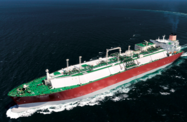The deep pre-Khuff formation off Qatar’s coast has become the focus of major test drilling and survey work, as energy firms step up their gas exploration efforts.
A 2005 moratorium on Qatar’s vast North Field, which looks set to remain in place, at least in the short term, has given current offshore activity added momentum. However, while 2014 may well prove to be a defining year for the new blocks, initial results have been mixed, with early flow at only some of the wells showing promise.
Heightened activity
Several companies are currently carrying out testing on the four blocks around Qatar’s main offshore North Field deposit, while some have already moved beyond the survey phase. GDF Suez began exploratory work at Qatar’s Block 4, after its second well tested positive for gas and condensates. The firm is now looking at how to develop the find with its partner, PetroChina, which has a 40% stake in the operation.
The second quarter should also bring new activity in Block A, where Japan’s JX Nippon Oil and Gas Exploration Qatar is set to begin drilling offshore. The China National Offshore Oil Corporation (CNOOC) is also expected to embark on drilling work later this year, having announced plans to sink a well of up to 5000 metres in Block BC, following years of seismic studies. The well would mark Qatar’s deepest to date, although results might not be known until early next year.
While Shell has already begun drilling in its designated area, disappointing results from its initial exploration led to speculation in the industry’s media that the global player could decide to relinquish its block. As it stands, surveys are scheduled to continue beyond 2014, with additional wells to be sunk if results indicate greater potential.
Major find
In March last year, the German player Wintershall, together with its partner, Mitsui Gas Development Qatar, announced that sizeable new deposits – which may hold up to 2.5trn cubic metres of natural gas according to estimates – had been identified in Block 4N, which is adjacent to the main North Field reserves and located in the Khuff formation.
While the finds are much smaller than the 25trn cubic metres of deposits located in the North Field, Wintershall’s discovery is significant, marking the first major new gas deposit identified in Qatar since the early 1970s.
The recent round of testing takes on added importance, given the question mark that remains over the suspension of activity at the North Field. While some reports have suggested that Doha could look at opening up the North Field reserves for further exploitation as early as next year, others suggest that the country may choose to wait, on the grounds that any rise in international demand for natural gas could be offset by higher increases in output elsewhere. In the end, however, it will depend on what further testing of the North Field shows.
“Once all of these projects have been producing for a few years, then we will have enough data to assess the long-term potential, as well as the limitations of the North Field,” Mohammed bin Saleh Al Sada, the minister of energy and industry, told OBG.
Qatar is all too aware that the coming years look likely to bring a surge in gas production, as new capacity in Australia, Africa and Russia comes online. Rising production, alongside the rapid development of shale gas in North America and elsewhere, may well force down prices.
Meeting domestic demand
Arnaud Berthet, the general manager of GDF Suez Exploration Qatar, questions whether local demand will take up all of the pre-Khuff deposits brought online.
“Several options could be considered for the marketing of Block-4 gas, the domestic market being one of them,” he told OBG in April. “Qatar has an increasing demand for domestic gas and the Barzan project, due to come on-stream this year, will provide most of the supply for many years to come. Hence it is not clear whether the domestic market can absorb gas from Block-4.”
The take from deposits identified by Wintershall is set to be channelled into the domestic grid, with the Block 4 North find earmarked for a key part in boosting local electricity production capacity, according to officials from the Qatar Electricity and Water Company.
Initial indications are that the pre-Khuff deposits will be significantly less than those of the North Field. However, if commercially viable, they offer a good opportunity for industry players to strengthen their position in the Qatari market by tapping new areas, while also enabling them to keep a close eye on developments at the North Field.
Follow Oxford Business Group on Facebook, Google+ and Twitter for all the latest Economic News Updates. Or register to receive updates via email.

